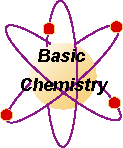Supersaturation
Purpose:
Some chemicals can become supersaturated fairly easily. This means that the solvent is holding more solute than is expected at that temperature. Usually the solvent is water and the solute is a solid. If you disturb a supersaturated solution by shaking the container or dropping something in it a precipitate will quickly form and the excess solute will come out of solution.
Materials:
small flask
- hot plate
- tongs
- ceramic tile
- sodium acetate trihydrate crystals
- hot plate
Procedure: Heat the flask with the crystals until they are liquified.
Discussion:


